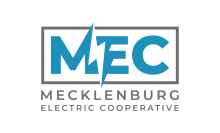Thumb Electric Cooperative Hits 4,000th Fiber Customer Milestone
Michigan-based Thumb Electric Cooperative says its ongoing fiber deployment has hit a new milestone: its 4000th connected broadband subscriber.
The cooperative’s latest customer, Verona Hills Golf Course in Huron County, Michigan, comes three years after the cooperative joined the growing trend of expanding into broadband access.
"We're very proud to reach this milestone," Cooperative Marketing and Communication Specialist Mitch Hirn said of the cooperative’s ongoing expansion.
"We look to continue our buildout over the next few years. We want more people to sign up for high-speed, reliable internet. The vast majority of our customers have been very pleased with our service."
In deployed markets Thumb offers two tiers of fiber broadband service via its TEC Fiber subsidiary: a symmetrical 500 megabit per second (Mbps) offering for $85 a month; and a symmetrical 1 gigabit per second (Gbps) offering for $125 a month. The cooperative’s fiber tiers do not feature usage caps, hidden fees, or long-term contracts.
First created in 1938, the Thumb Electric Cooperative is one of over 200 U.S. electrical cooperatives leveraging their century-old experience in rural electrification to bring affordable fiber access to long-neglected parts of the country – markets that in most cases were left behind by regional telecom monopolies disinterested in improving affordable access.
According to data from the National Rural Electric Cooperative Association (NRECA), 700 of the nation’s 900 electrical cooperatives have yet to expand into broadband access, so there’s plenty of legroom for additional cooperatives to join the ongoing trend.













